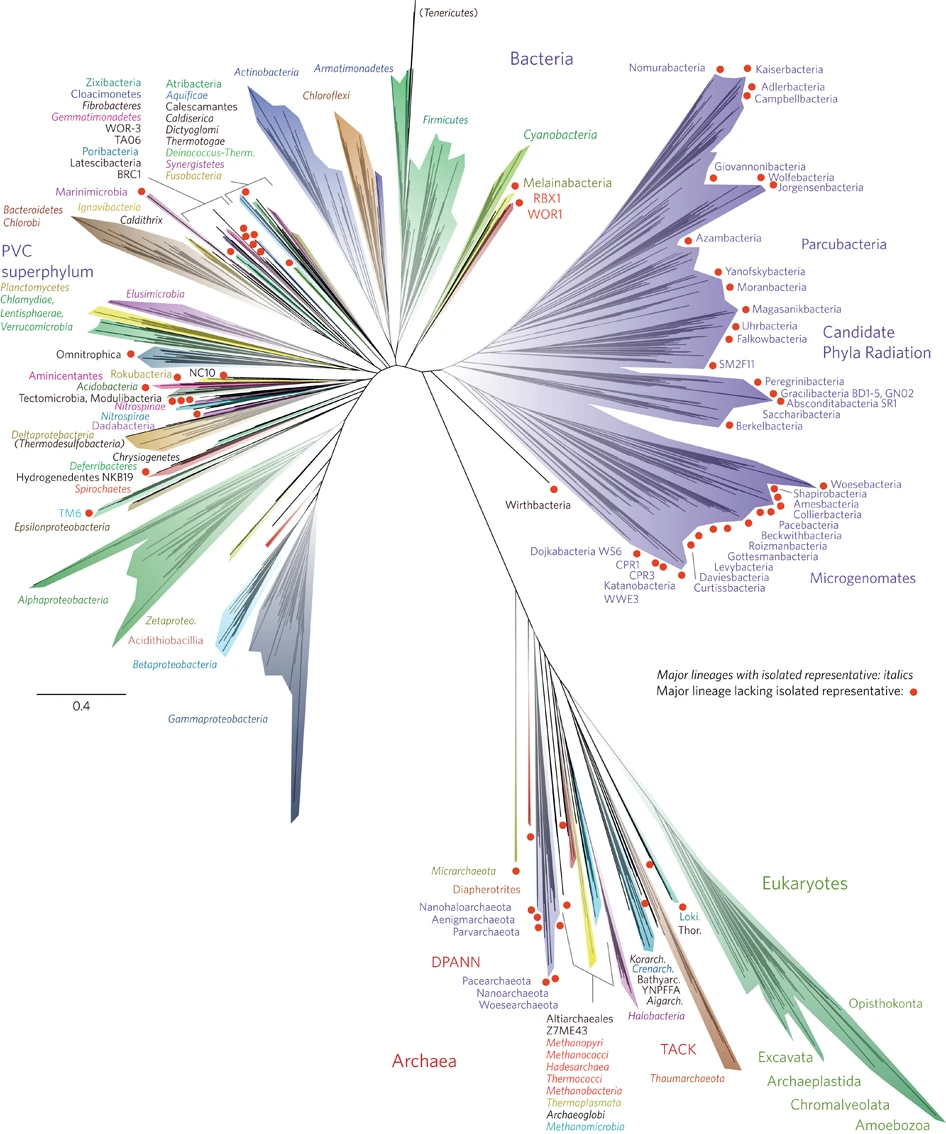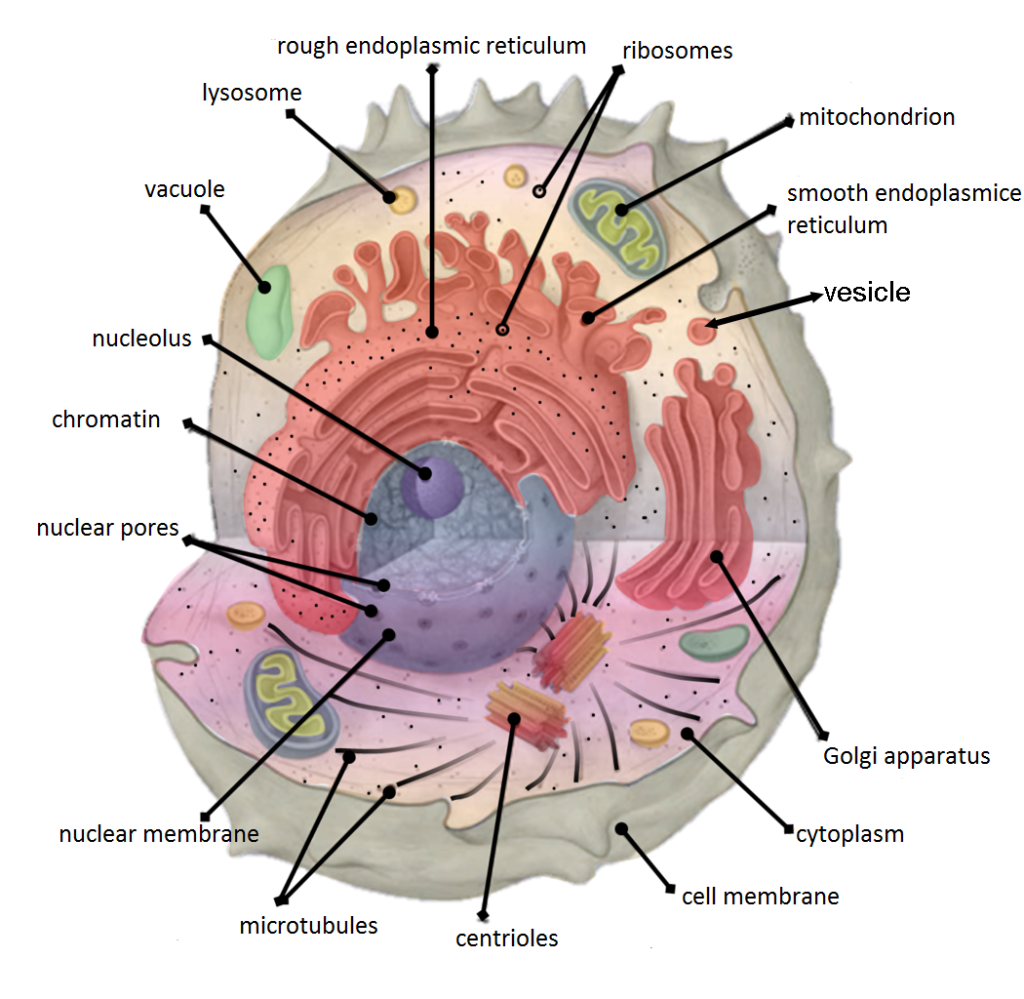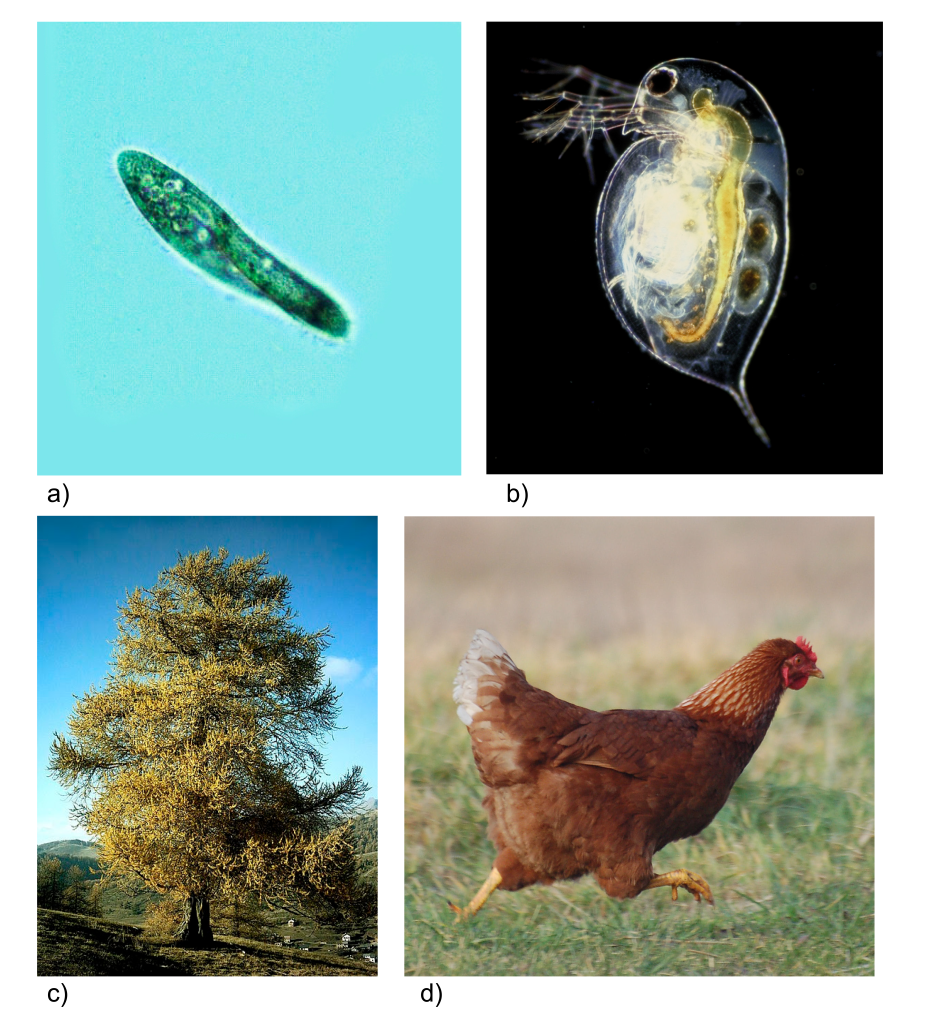3.7 Cells
All living things are composed of one or more cells. (Viruses are an exception to this, but the jury is still out on whether or not viruses should be considered alive.) Some organisms are one cell, while others are made up of dozens to quadrillions of cells. The estimated number of cells in a blue whale is greater than 100 quadrillion!
So what actually defines a cell? A cell is a phospholipid-membrane-enclosed living structure that can replicate and uses biomolecules (often sugars) for energy.
There are two main categories of cells: prokaryotes and eukaryotes. Prokaryotes are visually simpler, in that they have cytoplasm (the inside stuff), are enclosed by a membrane, and do not have smaller enclosed structures (called organelles) inside.
Prokaryotes are generally single-celled organisms (there are a few exceptions that we will not discuss here). Two classifications of prokaryotes are Bacteria and Archaea. While these two types of prokaryotes look similar under a microscope, they are actually only very distantly related to one another (they branched off from a common ancestor over three billion years ago!).

Eukaryotes have a more complicated cell structure. Eukaryotes contain organelles within the cell including the nucleus, mitochondria, chloroplasts (in plants and algae) and others.

Eukaryotes can be single-celled organisms or multicellular organisms (including all plants and animals).

All sexually reproducing organisms are eukaryotes. For that reason, we will focus on eukaryotes. Inside eukaryotic cells is a membrane-bound organelle called a nucleus, which is surrounded by other membrane-bound organelles called mitochondria. See the video in Section 3.8 for a description of all the organelles and their functions. This text will focus mainly on the nucleus and the mitochondria. The nucleus contains the vast majority of the cell’s DNA. The mitochondria act as the cell’s power-supply centers. Mitochondria take the energy from sugar and create high-energy molecules that the rest of the cell can use to do work and to replicate themselves.
Content on this page was originally published in The Evolution and Biology of Sex by Sehoya Cotner & Deena Wassenberg and is reproduced here in compliance with the original CC-BY-NC 4.0 license.
- By Koswac, CC BY-SA 4.0 http://creativecommons.org/licenses/by-sa/4.0) ↵

